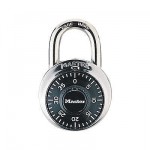 Consider a hypothetical: Imagine you are the CEO and sole owner of a new business enterprise. You hire a few employees who will have some innovative roles within your business model, whereby they may have some opportunities to create original work product that will be important to your business’ success. This work product may be a process, a technology, a marketing plan, a human resource protocol, a work of art, or a memorandum. Now assume that, a few years down the road, you want to (a) sell the business, (b) license the technology, or (c) distribute a significant part of a new process or business plan to clients or prospective clients in a newsletter. Now consider a few tips so that you can save yourself the embarrassment of finding out that you don’t actually own the intangible asset, and instead your employee does, who (oh by the way) is now leaving your company with said intangible asset to start a new competing business. (Caveat: these notes are not to be relied on, in any case, as legal advice, and all fact scenarios are different and call for different practices and independent counsel from your attorney. I simply wish to make light of a few “incidents” I have encountered in my practice in the hopes that it will steer others clear of large mistakes - usually by assuming too much.)
Consider a hypothetical: Imagine you are the CEO and sole owner of a new business enterprise. You hire a few employees who will have some innovative roles within your business model, whereby they may have some opportunities to create original work product that will be important to your business’ success. This work product may be a process, a technology, a marketing plan, a human resource protocol, a work of art, or a memorandum. Now assume that, a few years down the road, you want to (a) sell the business, (b) license the technology, or (c) distribute a significant part of a new process or business plan to clients or prospective clients in a newsletter. Now consider a few tips so that you can save yourself the embarrassment of finding out that you don’t actually own the intangible asset, and instead your employee does, who (oh by the way) is now leaving your company with said intangible asset to start a new competing business. (Caveat: these notes are not to be relied on, in any case, as legal advice, and all fact scenarios are different and call for different practices and independent counsel from your attorney. I simply wish to make light of a few “incidents” I have encountered in my practice in the hopes that it will steer others clear of large mistakes - usually by assuming too much.)
(1) In the case of a technology or other patentable subject matter, a patent must be assigned from the employee to an employer (since it is statutory that the applicant for a patent application be a person (in the US) and not a legal entity). This can be enforced as a result of an employment contract, which may state that all inventions in the scope of employment must be assigned to the employer, or it may state that all inventions in the scope of employment “are hereby assigned”. Remember to use present tense language, i.e., “I assign all rights to inventions now existing or created during the term of my employment.” A mere agreement that inventions will be assigned may not be enforceable (especially true for copyrights that are not within the “work for hire” provision of the copyright law that require a written assignment.)
(2) A copyrightable work product created by an employee within the scope of employment may be owned by the employer, whether or not anything is signed at all. But this shouldn’t be assumed. In such a circumstance, the employer is not only the owner of the copyright, but deemed the author as well. In other words, if the employee wanted to own these works, the employer would have to assign them to the employee. However, if the employer wishes to own work product that may not be created within the scope of employment (works that are created by the employee but which he or she is not paid for - a non-essential function of the employment relationship), or if the employer/employee relationship is an independent contractor relationship (or could be interpreted to be one), the safe thing to do is agree, in writing, expressly stating that the work will be “a work made for hire.” I can’t emphasize the need to use this language enough. You probably shouldn’t assume that your employee handbook, which states that copyrights are owned by the employer, and which is signed by the employee, is enough to effectuate the result you desire. If the employee handbook does not expressly use the term “work made for hire”, it may not be sufficient under Community for Creative Non-Violence v. Reid, 490 U.S. 730 [1989], which states that, if the employee is an independent contractor (based on agency principles), a work can be a work made for hire only if both of the following conditions are met: (1) it comes within one of the nine categories of works listed in part 2 of the definition under Section 101, and (2) there is a written agreement between the parties “specifying that the work is a work made for hire.”
(3) Deal with ownership of intangible assets, and non-compete issues, up front, ex ante, before something of importance to your business is created by an “employee” and you are stuck holding the remote control with no T.V.
 Ian McClure is a former corporate & securities and intellectual property law attorney with
Ian McClure is a former corporate & securities and intellectual property law attorney with  Trevor M. Blum is a former Associate in the Chicago-based, valuation practice group of Ocean Tomo, LLC., an intellectual property (IP) consultancy. Additionally, he provided instrumental research support to Intellectual Property Exchange International, Inc., an IP exchange start-up. Trevor holds a B.S. from Indiana University and is currently an MBA candidate at the University of Cambridge, focusing on international business and finance. His interests also include entrepreneurship, economics, and informational visualization. He enjoys running and cycling in his free time. Trevor seeks to bring a transnational business perspective to the blog.
Trevor M. Blum is a former Associate in the Chicago-based, valuation practice group of Ocean Tomo, LLC., an intellectual property (IP) consultancy. Additionally, he provided instrumental research support to Intellectual Property Exchange International, Inc., an IP exchange start-up. Trevor holds a B.S. from Indiana University and is currently an MBA candidate at the University of Cambridge, focusing on international business and finance. His interests also include entrepreneurship, economics, and informational visualization. He enjoys running and cycling in his free time. Trevor seeks to bring a transnational business perspective to the blog. 
No Comments, Comment or Ping
Reply to “Message from the Battlefield: Properly Secure Intangible Assets Before Managing Them”